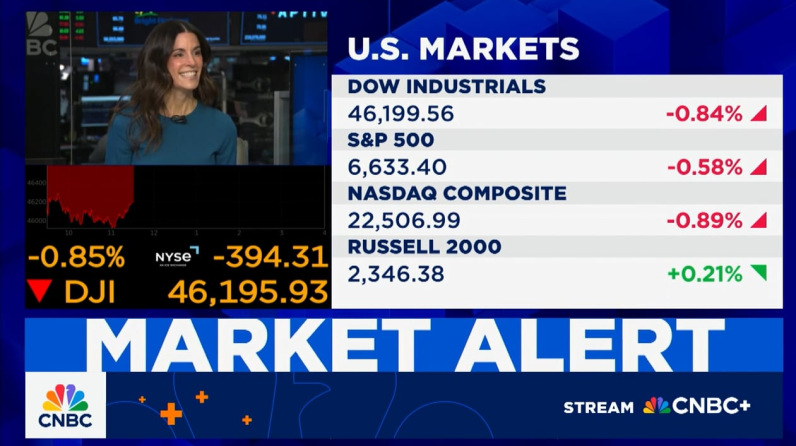

We believe that the Fed will likely cut rates in September and once more in 2025; we remain constructive on equities, particularly developed ex. U.S. and U.S. small and mid-cap stocks, as well as commodities.
As expected, the Federal Open Market Committee (“FOMC”) maintained the fed funds target rate at a range of 4.25% to 4.50% in yesterday’s meeting. However, much has changed, reflected by the 9-2 vote, since we last heard from the Committee. The meeting marks the first time since 1993 that there have been two dissenters – but the outcome was not entirely surprising given recent rhetoric from both Christopher Waller and Michelle Bowman. The statement, too, reflected a shift in tone. Coming on the heels of the initial release of Q2 2025 GDP, the Fed statement acknowledged that while “swings in net exports continue to affect the data, recent indicators suggest that the growth of economic activity moderated in the first half of the year.” As a reminder, the prior statement indicated that growth “has continued to expand at a solid pace.” In addition, while the prior statement cited uncertainty as “diminished,” this month’s statement instead pointed to still “elevated” uncertainty.
Both changes appeared to reflect a more dovish tilt coming into the press conference. However, in Federal Reserve Chair Jerome Powell’s remarks, he continued to reiterate that the job market is both “solid” and “in balance” based on a “wide set of indicators.” He stated that while there are “downside risks” in the labor market, there should instead be a keener focus on the unemployment rate, as the breakeven rate has come down in parallel with the decline in the labor force. As it relates to inflation, Powell admitted that while there has been little recent progress in the movement of PCE (the Fed’s preferred inflation gauge), the composition has changed. Service inflation has slowed, but he pointed to the influence of increased tariffs on the prices of certain goods. He did state that the Fed views the current upward movement as a one-time shift, but that the risk that the higher prices become persistent is one that the Fed “must manage.” In our view, it was this admission, which he built on later in the press conference, that turned the sentiment tide.
Outside of yesterday’s Fed decision, this week is a busy one. With the most recent delay deadline for reciprocal tariffs looming, announced deals with Japan and the European Union have shifted the pressure to Canada, Mexico, South Korea, Taiwan, Brazil, and India, with the latter two nations in President Trump’s crosshairs coming into this week. Even more confounding is the status of a further delay and/or negotiation with China, which at this point remains unclear. What is evident is that tariff revenues continued to roll in and Treasury Secretary Scott Bessent has indicated that it will be a “busy August” as tariff rates are expected to rise meaningfully for those countries without a deal.
There are also a number of key economic data releases to contend with. As mentioned above, the first release of Q2 2025 GDP reflected +3.0% year-over-year growth for the U.S. economy, compared with a decline of -0.5% in the first quarter of the year. As expected, imports fell sharply, down -30.3%, reversing the sharp increase from the first quarter. Consumer spending was up a modest +1.4%, with overall domestic demand up only +1.2%, while business equipment spending decelerated to +4.8% and residential investment posted a woeful -4.6% decline. Overall, the U.S. economy grew by only +1.2% in the first half of 2025, and with growth expected to accelerate only modestly in the second half, it is likely that 2025 will close well off 2025’s +2.8% pace. With that said, +3.0% was modestly better than expected and is helping to push the probability of a September rate cut lower in yesterday’s trading session. This may reverse come Friday, when we receive July’s U.S. non-farm payrolls report. While consensus is hovering around +118k, the range of potential outcomes is incredibly wide and could incite a strong move in both equity and bond markets.
In short, investors were disappointed with the hawkish tone struck by Chair Powell in the press conference and are bracing for another period of data watching ahead of the September meeting. August and September have been seasonally weak over the last several years, and yesterday’s decision would likely have put pressure on Powell outside of the political pall that is currently hanging over him. U.S. equities sold off, with small caps underperforming while the VIX index moved higher along with Treasury yields and the dollar. As for our views and positioning, we believe that the Fed will likely cut rates in September and once more before the end of 2025. We remain constructive on equities, particularly developed ex. U.S. and U.S. small and mid-cap stocks, as well as commodities. We believe any weakness following Q2 2025 earnings season could represent an opportunity to add to risk positions, and that a recession is not on the horizon, despite the more modest economic growth experienced in the first half of the year.


VIDEO
The Kantor Group | Charles Kantor’s Year-End Reflections and Key Questions as We Head Into 2026

INSIGHTS
CIO Notebook: Dual Release of Delayed Non-Farm Payrolls Likely Supports Another Cut

INSIGHTS
Using Tax-Free Gifts for Wealth Transfer

INSIGHTS
CIO Notebook: Powell Plays the Middle as Fed Cuts Rates

MARKET COMMENTARY
Giving Thanks for Market Strength

INSIGHTS
CIO Notebook: September U.S. Non-Farm Payrolls Further Complicate the Narrative

VIDEO
Holly Newman Kroft Featured on CNBC’s Money Movers November 18
VIDEO
Plan for Peace of Mind with Our Estate Planning Organizer
MARKET COMMENTARY
Some Tricks, More Treats
INSIGHTS
CIO Notebook: Markets Rattled as Fed Leans Hawkish
REPLAY
Private Wealth Investment Outlook 4Q25
INSIGHTS
CIO Notebook: September Core CPI Comes in Late but Light
INSIGHTS
Charitable Fundraising: Moving Beyond Cash
IMPORTANT INFORMATION:
This material is provided for informational purposes only and nothing herein constitutes investment, legal, accounting or tax advice, or a recommendation to buy, sell or hold a security. This material is general in nature and is not directed to any category of investors and should not be regarded as individualized, a recommendation, investment advice or a suggestion to engage in or refrain from any investment-related course of action. Any views or opinions expressed may not reflect those of the firm as a whole. Neuberger Berman products and services may not be available in all jurisdictions or to all client types. Diversification does not guarantee profit or protect against loss in declining markets. Investing entails risks, including possible loss of principal. Investments in private equity are speculative and involve a higher degree of risk than more traditional investments. Investments in private equity are intended for sophisticated investors only. Unless otherwise indicated, returns shown reflect reinvestment of dividends and distributions. Indexes are unmanaged and are not available for direct investment. Investing entails risks, including possible loss of principal. Past performance is no guarantee of future results.
Portfolio positioning views expressed herein are those of Neuberger Berman’s Private Wealth Investment Group, which may include those of the Neuberger Berman’s Asset Allocation Committee. Asset allocation and positioning views are based on a hypothetical reference portfolio. The Private Wealth Investment Group analyzes market and economic indicators to develop asset allocation strategies. The Private Wealth Investment Group works in partnership with the Office of the CIO. The Private Wealth Investment Group also consults regularly with portfolio managers and investment officers across the firm. The Asset Allocation Committee is comprised of professionals across multiple disciplines, including equity and fixed income strategists and portfolio managers. The Asset Allocation Committee reviews and sets long-term asset allocation models, establishes preferred near-term tactical asset class allocations and, upon request, reviews asset allocations for large, diversified mandates. Asset Allocation Committee members are polled on asset classes and the positional views are representative of an Asset Allocation Committee consensus. The views of the Asset Allocation Committee and the Private Wealth Investment Group may not reflect the views of the firm as a whole and Neuberger Berman advisers and portfolio managers may take contrary positions to the views of the Asset Allocation Committee or the Private Wealth Investment Group. The Asset Allocation Committee and the Private Wealth Investment Group views do not constitute a prediction or projection of future events or future market behavior. Defensive positioning generally means an underweight bias on allocations to risk assets such as equities and alternatives. Positioning views may change over time without notice and actual client positioning may vary significantly. Discussion of yield characteristics or total returns of different asset classes are for illustrative purposes only. Such asset classes, such as equities and fixed income, may have significantly different overall risk-return characteristics which should be consider before investing.
The information in this material may contain projections, market outlooks or other forward-looking statements regarding future events, including economic, asset class and market outlooks or expectations, and is only current as of the date indicated. There is no assurance that such events, outlook and expectations will be achieved, and actual results may be significantly different than that shown here. The duration and characteristics of past market/economic cycles and market behavior, including any bull/bear markets, is no indication of the duration and characteristics of any current or future be market/economic cycles or behavior. Information on historical observations about asset or sub-asset classes is not intended to represent or predict future events. Historical trends do not imply, forecast or guarantee future results. Information is based on current views and market conditions, which will fluctuate and may be superseded by subsequent market events or for other reasons.
Discussions of any specific sectors and companies are for informational purposes only. This material is not intended as a formal research report and should not be relied upon as a basis for making an investment decision. The firm, its employees and advisory accounts may hold positions of any companies discussed. Nothing herein constitutes a recommendation to buy, sell or hold a security. It should not be assumed that any investments in securities, companies, sectors or markets identified and described were or will be profitable. Investment decisions and the appropriateness of this content should be made based on an investor's individual objectives and circumstances and in consultation with his or her advisors.
Neuberger Berman Investment Advisers LLC is a registered investment adviser.
The “Neuberger Berman” name and logo are registered service marks of Neuberger Berman Group LLC.